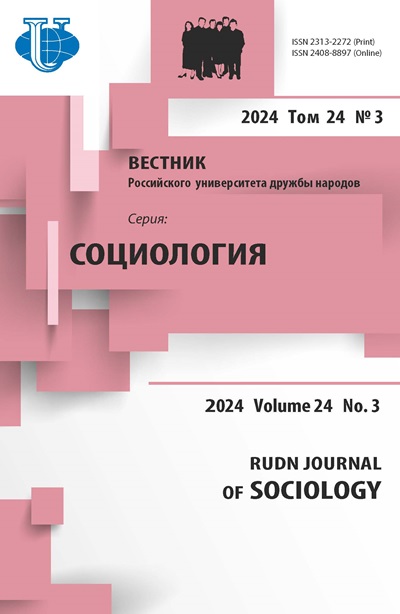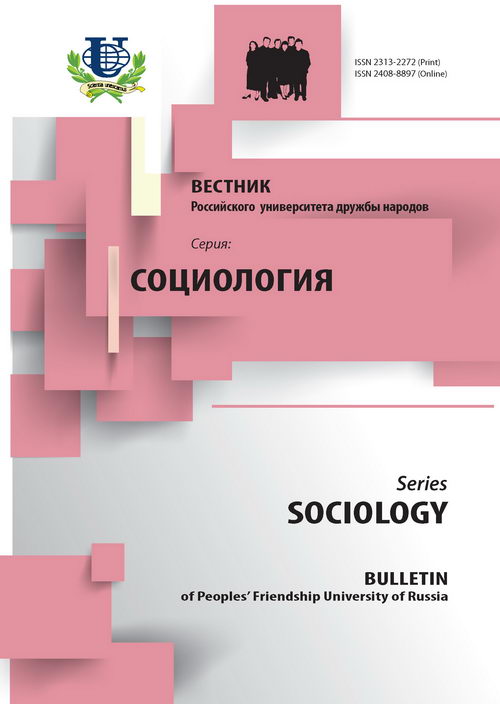Agency and the reproduction of social structures: On the example of the rotation system of work in Bashkortostan
- Authors: Turakayev MS1
-
Affiliations:
- Saint-Petersburg State University
- Issue: Vol 16, No 3 (2016)
- Pages: 599-610
- Section: Surveys, experiments, case studies
- URL: https://journals.rudn.ru/sociology/article/view/14005
Cite item
Full Text
Abstract
The article considers the way of life, lifestyle and positions in the labor market of shift workers from rural areas of the Republic Bashkortostan. This social group is rather large and specific to the Volga Federal District of Russia. Its distinctive features are mobile employment and regular pendulum migration. The key aim of the study was to analyze the agency and the reproduction of social structures in the sphere of the long-distance rotation system, the position and roles of shift workers in the social life of the Russian region. The community of shift workers is considered as a social space of positions (external social structures in the sphere of employment), and as a social space of their way of life and individual characteristics (lifestyle, cultural capital and habitus). The interaction within the social space of the long-distance shift positions, mode of life and lifestyle of shift workers is based on the principle of the structure “duality” that opposes and contradicts the principle of structural “dualism”. The paper reveals differences between two principles in the context of structuration theory, constructivist structuralism and critical realism. The methodology of the analysis of shift workers’ labor participation and everyday activities is based on the idea of the duality of structure. The labor career and rural mode of life of shift workers are determined by structural and institutional conditions that limit their behavior in the reproduction of social structures. The lifestyle of shift workers is determined by a relatively free choice of leisure activities during their stay at home in rural areas and characterizes their agency. The selectivity of their leisure practices is reflected in the well-established lifestyle, which depends on the limitations in the social sphere of rural life and their mode of life at work («vakhta»). The reproduction of shift workers labor positions hierarchy in the social space is provided by the elements of lifestyle (cultural capital, and habits in praticular) and the way of life (for example, well-being).
About the authors
M S Turakayev
Saint-Petersburg State University
Author for correspondence.
Email: mturakaev@gmail.com
Saint Petersburg, Russia
References
- Bourdieu P. Fizicheskoye i sotsial'noye prostranstva [The Physical and Social Spaces]. Bour-dieu P. Sotsiologiya sotsial'nogo prostranstva. M. SPb.: Institut eksperimental'noy sotsiologii; Aleteyya, 2007.
- Giddens A. Ustroyeniye obshchestva. Ocherk teorii strukturatsii [The Constitution of Society: Outline of the Theory of Structuration]. M.: Akademicheskiy proekt, 2005.
- Il'in V.I. Fenomen polya: ot metafory k nauchnoy kategorii [The Phenomenon of Field: from the Metaphor to the Scientific Category] // Rubezh (al'manakh sotsial'nykh issledovaniy). 2003. No 18.
- Plyusnin Yu.M., Zausayeva Ya. D., Gidkevich N.N., Pozanenko A.A. Otkhodniki [Seasonal Workers]. M.: Novyy Khronograf, 2013.
- Stadnik A.T., Sharavina Y.V. Vakhtovyy metod organizatsii sel'skokhozyaystvennogo pro-izvodstva [Fly-in and fly-out Method of the Organization of the Agricultural Production]. Vestnik Novosibirskogo gosudarstvennogo agrarnogo universiteta. 2011. Vol. 4. No 20.
- Sztompka P. Sotsiologiya sotsial'nykh izmeneniy [Sociology of Social Change]. M.: Aspekt Press, 1996.














